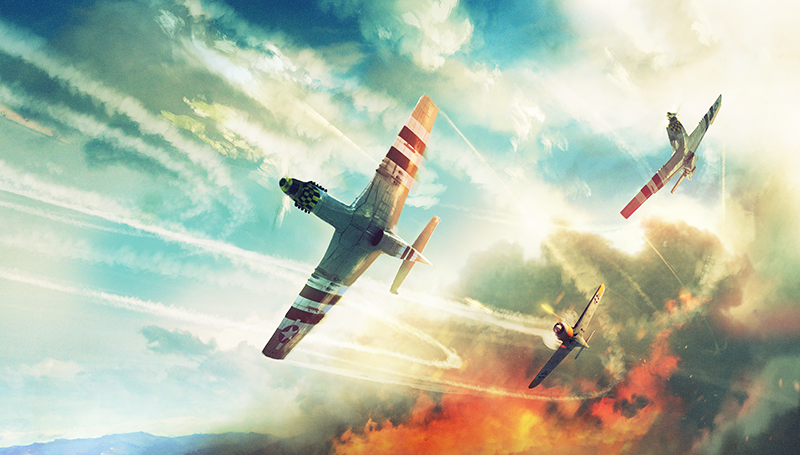
- For PC
- For MAC
- For Linux
- OS: Windows 10 (64 bit)
- Processor: Dual-Core 2.2 GHz
- Memory: 4GB
- Video Card: DirectX 11 level video card: AMD Radeon 77XX / NVIDIA GeForce GTX 660. The minimum supported resolution for the game is 720p.
- Network: Broadband Internet connection
- Hard Drive: 23.1 GB (Minimal client)
- OS: Windows 10/11 (64 bit)
- Processor: Intel Core i5 or Ryzen 5 3600 and better
- Memory: 16 GB and more
- Video Card: DirectX 11 level video card or higher and drivers: Nvidia GeForce 1060 and higher, Radeon RX 570 and higher
- Network: Broadband Internet connection
- Hard Drive: 75.9 GB (Full client)
- OS: Mac OS Big Sur 11.0 or newer
- Processor: Core i5, minimum 2.2GHz (Intel Xeon is not supported)
- Memory: 6 GB
- Video Card: Intel Iris Pro 5200 (Mac), or analog from AMD/Nvidia for Mac. Minimum supported resolution for the game is 720p with Metal support.
- Network: Broadband Internet connection
- Hard Drive: 22.1 GB (Minimal client)
- OS: Mac OS Big Sur 11.0 or newer
- Processor: Core i7 (Intel Xeon is not supported)
- Memory: 8 GB
- Video Card: Radeon Vega II or higher with Metal support.
- Network: Broadband Internet connection
- Hard Drive: 62.2 GB (Full client)
- OS: Most modern 64bit Linux distributions
- Processor: Dual-Core 2.4 GHz
- Memory: 4 GB
- Video Card: NVIDIA 660 with latest proprietary drivers (not older than 6 months) / similar AMD with latest proprietary drivers (not older than 6 months; the minimum supported resolution for the game is 720p) with Vulkan support.
- Network: Broadband Internet connection
- Hard Drive: 22.1 GB (Minimal client)
- OS: Ubuntu 20.04 64bit
- Processor: Intel Core i7
- Memory: 16 GB
- Video Card: NVIDIA 1060 with latest proprietary drivers (not older than 6 months) / similar AMD (Radeon RX 570) with latest proprietary drivers (not older than 6 months) with Vulkan support.
- Network: Broadband Internet connection
- Hard Drive: 62.2 GB (Full client)
”Guardian Angel” Specials:
October 18th 12:00pm GMT (05:00am PDT) till October 20th 10:00am GMT(03:00am PDT)
15% discounts on purchasing and repair for “Mustangs” P-51D-5 and P-51D-30
Event
[Operation]Ruhr - Historical Battles mode
New strategic targets for bombers added. Goal of US team - to destroy ground targets, escort and cover friendly bombers. Goal of German team - to prevent destruction of ground targets, eliminate enemy bomber formation.
Team USA: Heavy bombers B-17E/L, B-17G, ground attackers P-47D-25, P-47D-28, and «guardian angels» P-51D-5 and P-51D-30
Team Germany: Bf.109 fighters (E-3, F-4, F-4/trop, G-2, G-6, G-10), fighters of Fw.190 series (A-5, A-5/U-2, F-8), all heavy fighters of Me-410 series (A-1, A-1/U2, A-1/U4, B-1, B-1/U2, B-2/U4, B-6/R3)
Guardian Angel: The Second Raid on Schweinfurt
 Schweinfurt was the location of most of the ball-bearing production in Nazi Germany at the onset of World War II, and was eventually devastated following a series of Allied strategic bombing raids. It was hoped that the destruction of the factories located in the city would cripple the production of new tanks and aircraft.
Schweinfurt was the location of most of the ball-bearing production in Nazi Germany at the onset of World War II, and was eventually devastated following a series of Allied strategic bombing raids. It was hoped that the destruction of the factories located in the city would cripple the production of new tanks and aircraft.
Two of these raids, the Schweinfurt-Regensburg mission and the Second Raid on Schweinfurt, were particularly costly for the United States Army Air Forces. On August 17 1943, 230 B-17s of the USAAF 8th Air Force, intended as the second wave of bombers behind a force attacking Regensburg, encountered intense anti-aircraft artillery and over 300 defending fighter aircraft, with the result that only 184 aircraft bombed their targets and 36 aircraft did not return to their bases in England. Production suffered an immediate 34% cutback, and all plants but the largest were devastated by fire, but the existing industrial infrastructure had not been conducive to destruction by a single raid. Efforts to disperse the surviving machinery began immediately and the Luftwaffe, recognizing the threat, began redeploying large numbers of interceptors along the corridor to Schweinfurt.
After rebuilding its strength the 8th Air Force mounted a second attack on October 14, 1943, which proved to be more costly than the first and became known as “Black Thursday”. In this raid by 291 B-17s, 229 bombed the target and 60 were lost. Such very heavy losses could not be sustained, and unescorted bomber raids deep into Germany were suspended until 1944. Raids on Schweinfurt resumed in February, 1944 during what came to be known as “Big Week.”




